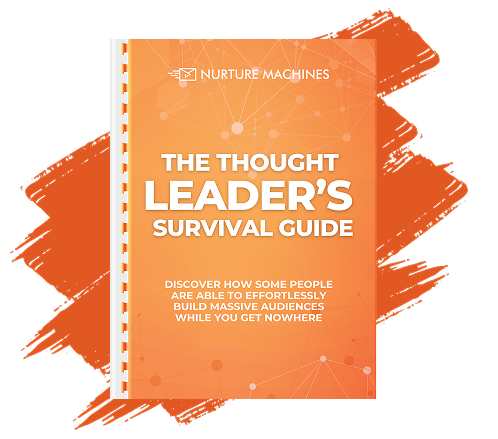Retention rates are the foundation of sustainable business growth, reflecting how well a company maintains its customer relationships. With acquisition costs rising, brands must focus on keeping existing customers engaged through meaningful, ongoing interactions. Effective retention strategies not only reduce churn but also strengthen brand loyalty. Automation and personalization play vital roles in creating tailored experiences that keep customers coming back. This blog outlines retention factors, strategies, tools, and data insights that support long-term customer value.
Key Takeaways
- Personalization drives engagement by delivering timely, relevant customer experiences.
- Automation helps maintain consistency and improves support speed at scale.
- Behavior data reveals churn risks and informs smarter retention strategies.
- Loyalty programs boost repeat purchases when tailored to customer actions.
- Regular tracking and audits keep retention strategies focused and effective.
What Are the Key Factors Affecting Customer Retention Rates?

Strong retention depends on consistent customer experience, service reliability, and insight into customer behavior. Each of these elements must work together to build trust and satisfaction. Companies that focus on smooth interactions, responsive support, and clear communication see stronger loyalty. Automated tools help maintain consistency, track behavior, and identify when engagement drops. The key is aligning retention efforts with customer expectations and delivering value at every stage.
How Does Customer Experience Influence Retention?
Customer experience includes every interaction across the customer journey, from website use to support responses. Positive experiences are built on convenience, empathy, and efficiency. Automation ensures prompt responses while maintaining personalization across channels. Brands that manage experience consistently avoid confusion and reduce customer frustration. Tracking interaction quality helps flag and fix weak points quickly. When customers feel understood and supported, they stay longer. A good experience becomes the reason they don’t look elsewhere. This builds lasting brand loyalty.
Why Is Understanding Customer Behavior Crucial for Retention?
Behavior data reveals what customers want and how they respond to various touchpoints. Tools that analyze patterns help businesses anticipate churn and intervene before it happens. Personalization engines can adjust messaging and offers in real-time. This makes every interaction feel more relevant and timely. Understanding behavior allows for smarter segmentation and stronger re-engagement efforts. Behavior-driven insights fuel campaigns that actually resonate. The result is stronger loyalty and higher customer lifetime value. Behavioral intelligence turns retention into a proactive process.
How Do Product and Service Quality Impact Customer Loyalty?
Consistent quality builds confidence and reduces the urge to switch. Customers return to products and services that work reliably and meet expectations. Fast, helpful service is equally important. Automation tools help maintain consistency and support responsiveness. Brands that monitor quality and adapt quickly retain more customers. Quality assurance systems help catch problems early. Loyalty stems from knowing what to expect every time. When quality is paired with excellent service, retention grows.
What Effective Tips Can Improve Retention Rates Quickly?
Quick wins include improving support speed, personalizing outreach, and simplifying follow-ups. Automated messaging ensures faster customer touchpoints. Loyalty incentives can also jumpstart engagement. Brands should address bottlenecks like slow service or generic content. Retention tools can streamline task flows and reduce drop-offs. Small changes like proactive check-ins go a long way. Personalization increases relevance in offers and communication. These actions quickly show customers they matter.
What Effective Tips Can Improve Retention Rates Quickly?

Quick wins include improving support speed, personalizing outreach, and simplifying follow-ups. Automated messaging ensures faster customer touchpoints. Loyalty incentives can also jumpstart engagement. Brands should address bottlenecks like slow service or generic content. Retention tools can streamline task flows and reduce drop-offs. Small changes like proactive check-ins go a long way. Personalization increases relevance in offers and communication. These actions quickly show customers they matter.
How Can Personalization Boost Customer Engagement and Retention?
Personalization turns one-size-fits-all communication into relevant, timely engagement. Segmentation tools can group users by preferences, behaviors, or lifecycle stages. This makes content and offers feel tailored, not automated. Personalized product suggestions, emails, and rewards deepen interest. Real-time personalization tools adjust messaging instantly. Customers who feel understood are more loyal. Automation ensures scale without losing personal touch. Consistency across platforms strengthens perception. Personalized journeys boost both satisfaction and retention.
Which Communication Channels Are Most Effective for Retaining Customers?
Effective retention requires communicating through channels your customers already use. Email, in-app messaging, live chat, and SMS all offer opportunities for timely interaction. Automation tools make these channels more responsive and consistent. Brands that integrate messaging platforms reduce wait times and improve satisfaction. Omnichannel strategies keep the customer journey connected. The key is delivering value in each message, not just visibility. Personalized responses on the right channel improve outcomes. Consistent messaging builds familiarity and trust.
How Does Offering Loyalty Programs Increase Repeat Purchases?
Loyalty programs provide a reason for customers to return through points, perks, or exclusive benefits. When automated and tied to behavior, these programs grow more effective. Businesses can track activity and reward actions that align with retention goals. Programs can offer tailored rewards based on segments. Automation simplifies how rewards are triggered and tracked. Personalization makes the experience feel more meaningful. Customers respond when benefits feel earned and unique. Retention improves as customers see increasing value over time.
How Can Businesses Use Data Analytics to Improve Retention Rates?

Data analytics transforms user behavior and engagement into strategic action plans. Businesses can track usage patterns, segment customers, and detect churn risks in real time. When analytics tools are integrated into CRM systems, businesses can make smarter, faster decisions. Retention programs become personalized and data-backed. Automation can be triggered based on behavior signals. Predictive models identify which customers need attention. These insights fuel campaign updates and process improvements. Analytics makes retention more proactive and precise.
What Customer Metrics Should Be Tracked for Retention Analysis?
Key metrics include churn rate, customer lifetime value, repeat purchase rate, satisfaction scores, and engagement trends. These metrics highlight how loyal and profitable customers are over time. Automated dashboards offer visibility into real-time performance. Segmenting these metrics reveals which groups need targeted retention actions. Repeat behavior and engagement spikes show what’s working. Drop-offs indicate where adjustments are needed. Combining metrics with behavior data offers deeper clarity. The more granular the tracking, the more focused the retention.
How Can Customer Journey Mapping Identify Churn Points?
Journey mapping visualizes each customer interaction, helping identify friction points. Businesses can track where users drop off, delay purchases, or stop responding. Automation tools flag these areas for targeted improvements. Adjusting experiences at known churn points improves overall satisfaction. Journey mapping also helps align internal processes to real customer paths. Patterns in drop-off behavior suggest where to step in. With mapped insights, businesses can refine messaging and support timing. Reducing friction increases retention at key stages.
Which Tools and Software Support Retention Rate Improvement?
Retention-focused tools include CRM platforms, marketing automation systems, and customer success dashboards. These tools track engagement, automate follow-ups, and flag high-risk users. When integrated, they create a full picture of customer health. Automation tools deliver consistent outreach based on behavior. Dashboards track KPIs and retention metrics in real-time. Some platforms include loyalty program support and segmentation. Choosing scalable, flexible software improves long-term results. The right tools make it easier to personalize and monitor at scale.
How Do Customized Retention Strategies Increase Customer Lifetime Value?

Customized strategies align marketing, support, and loyalty efforts with each customer segment’s unique needs. This approach boosts lifetime value by making customers feel understood and prioritized. Segmentation enables the right offer at the right time. Automation tools execute personalized campaigns at scale. Continuous tracking refines the strategy over time. Personalization also drives relevance and satisfaction. Customers engage more when content and rewards match behavior. Tailoring experiences increases loyalty and total value over time.
How Do Customized Retention Strategies Increase Customer Lifetime Value?
Custom strategies allow businesses to prioritize their highest-value customers and nurture others into similar patterns. Segments can be based on spending behavior, support history, or content engagement. Personalized campaigns boost conversion and long-term loyalty. Automation tools support these strategies by delivering behavior-specific outreach. Tailored loyalty programs can target dormant users or reward high performers. Data-backed personalization keeps strategies current and impactful. These efforts deepen relationships and extend the buying cycle. More relevance means more engagement and value.
Why Is Industry-Specific Approach Important for Retention?
Every industry has unique customer behaviors, decision timelines, and expectations. A one-size-fits-all strategy risks missing those nuances. Industry-specific approaches address pain points that generic programs miss. Automation flows can reflect sector-specific needs—like subscription renewals in SaaS or seasonal shopping in retail. Messaging cadence and tone also benefit from customization. Targeting content based on industry boosts relatability and trust. Monitoring churn by segment helps refine these efforts further. Matching strategy to industry leads to better outcomes and longer retention.
How to Design Retention Programs Tailored to Different Customer Segments?
Segmentation begins with analyzing customer data—demographics, purchase history, and engagement levels. These segments guide how and when to engage each group. For high-value customers, create exclusive loyalty perks and early access offers. First-time buyers may respond better to onboarding flows and small incentives. Automation helps send targeted campaigns to each segment without manual work. Testing and refining segment strategies improves impact. Tracking outcomes per segment highlights what’s working. Matching offers to behavior increases retention across the board.
What Training And Strategies Support Effective Retention Teams?

Retention teams perform best when they’re equipped with tools, data knowledge, and customer empathy skills. Structured training ensures consistent delivery of retention strategies. Teams must know how to use CRM platforms, analyze engagement patterns, and communicate proactively. Hands-on workshops and scenario-based learning help improve problem-solving. Automation training ensures teams maximize efficiency and minimize manual effort. Strategy alignment ensures everyone focuses on the same goals. When teams are trained and empowered, customer experiences become smoother and more consistent.
What Are Examples of Effective Training and Workshops for Retention Teams?
Retention workshops should include modules on automation, data interpretation, and customer communication. Sessions can walk teams through using CRM dashboards to spot churn risks. Role-play exercises simulate real support scenarios to improve empathy. Cross-functional sessions align marketing, support, and product goals. Ongoing education helps teams stay current on new tools. Peer feedback can also improve performance. Reinforcement ensures the concepts stick. Regular refreshers keep retention execution sharp and informed.
What Are the Best Practices for Measuring and Sustaining Improved Retention Rates?
Start with setting clear retention KPIs and ensuring visibility through dashboards. Schedule regular audits—monthly or quarterly—to spot patterns. Automate metric tracking to get real-time insights. Don’t rely only on numbers—combine them with direct customer feedback. Share findings across teams to improve alignment. Adjust strategies based on trends or sudden drops. Celebrate retention wins to keep teams motivated. Consistency in tracking and action leads to long-term improvement.
How Often Should Retention Rates Be Monitored and Audited?
Retention performance should be continuously monitored and formally audited every few weeks or months. High-churn segments may need weekly checks. Automated alerts can notify teams of major shifts. Frequent reviews ensure quick response to drop-offs. Segment audits help prioritize effort where it matters most. Shared dashboards help everyone stay informed. Trends can guide campaign adjustments. Consistent monitoring keeps goals achievable and visible.
Frequently Asked Questions
How does personalization specifically improve retention rates?
Personalization improves retention by making each customer interaction feel tailored and relevant. Nurture Machines uses automation tools to deliver behavior-based messaging, segment users by activity, and create content that matches individual preferences. This approach increases satisfaction and deepens loyalty by ensuring customers receive value-driven, timely experiences across every touchpoint.
What role does data analytics play in retention strategy?
Data analytics helps businesses understand customer behavior, identify churn risks, and uncover opportunities for deeper engagement. At Nurture Machines, analytics powers personalized campaigns, refines audience segmentation, and tracks customer journeys in real time. These insights guide strategic decisions, optimize communication flows, and support retention programs that adapt quickly to changing user behavior.
How often should businesses audit their retention metrics to ensure continuous improvement?
Retention metrics should be reviewed continuously, with structured audits conducted monthly or quarterly. This allows teams to detect changes in churn, engagement, or loyalty trends. Nurture Machines provides automation dashboards and reporting tools to help clients monitor these metrics efficiently and adjust retention strategies proactively.
What are some common causes of customer churn and how can they be mitigated?
Common churn causes include poor communication, lack of personalization, delayed support, and irrelevant offers. To mitigate churn, businesses should use automated workflows, personalized re-engagement campaigns, and customer behavior monitoring. Nurture Machines enables brands to address these issues using data-backed tools that trigger timely follow-ups and keep experiences aligned with customer needs.
How do loyalty programs enhance customer retention and what are best practices?
Loyalty programs increase retention by rewarding ongoing engagement and building emotional connection. Best practices include using behavior-driven incentives, tiered rewards, and automation for tracking and outreach. Nurture Machines helps clients design loyalty systems that integrate seamlessly with CRM tools, so customers receive timely, personalized rewards that encourage long-term participation.
Conclusion
Improving customer retention isn’t just about keeping customers—it’s about continually delivering value, building trust, and anticipating needs. With the right combination of personalization, data analytics, automated workflows, and consistent communication, brands can create seamless experiences that reduce churn and deepen loyalty. Tools like those provided by Nurture Machines empower businesses to proactively engage customers, track behavioral insights, and optimize loyalty strategies at scale. When businesses invest in tailored experiences and retention-focused strategies, they don’t just retain customers—they grow lifetime value and long-term brand equity.







